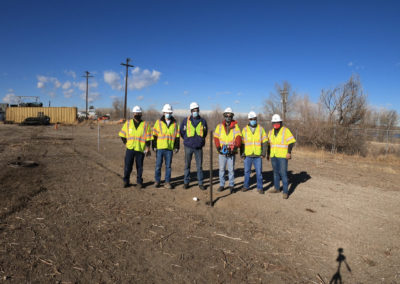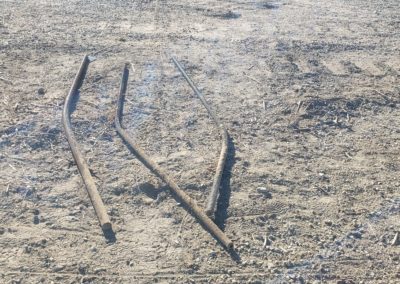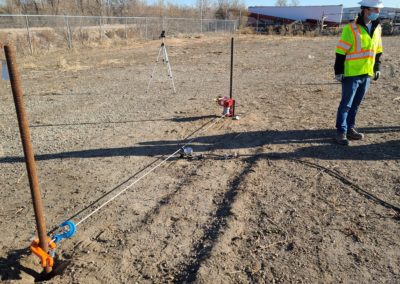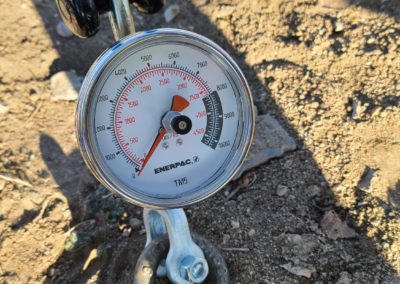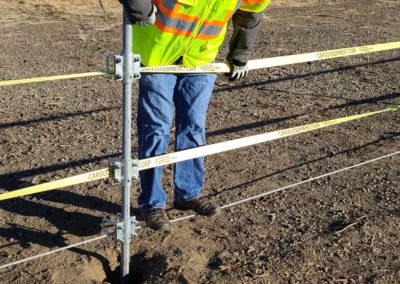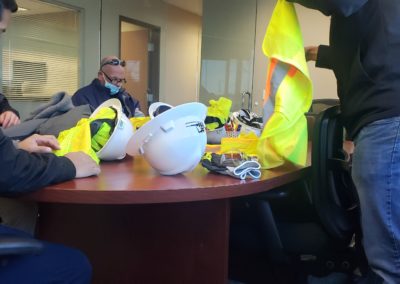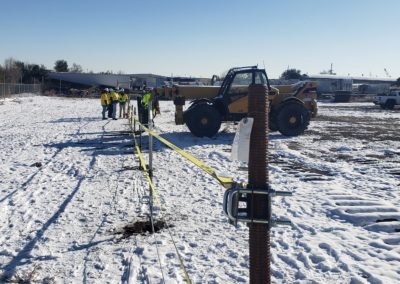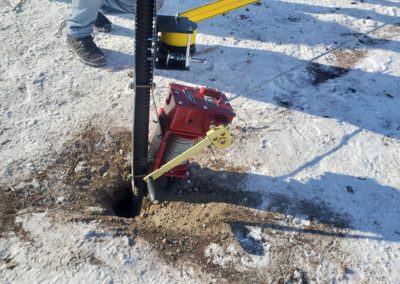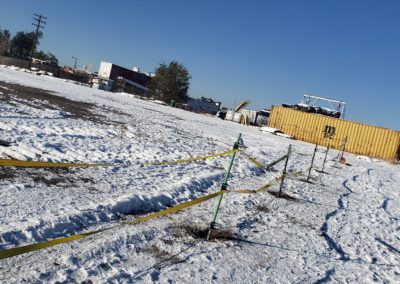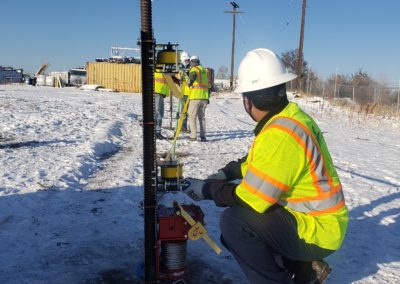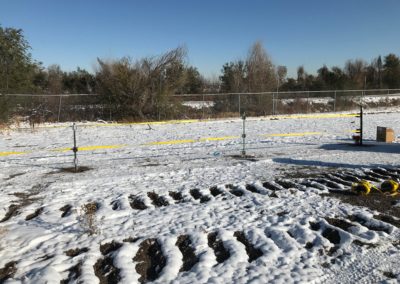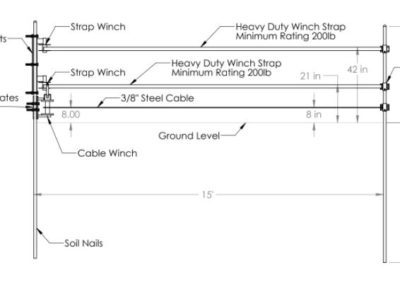Perimeter Protection System by Control Patrol
Overview
Perimeter Protection System
GeoStabilization International asked the project team to design a perimeter protection system for remote area construction sites. This new system must be lightweight, easy to install, durable, and able to meet all OSHA, ANSI, and CSA standards. GSI selected a combination of preliminary concepts to create the final solution. The solution consists of two winch initiated strap lines and clamp assemblies attaching the strap to pre-drilled soil nails. If suspending workers from the system is desired, a bottom cable line with winch can be added. The team developed a 90 ft prototype and was able to test the system to ensure the safety and ease of use for future users of the system. The new system eliminates the need for excess heavy cable, can be set up faster than the previous system, and meets all regulated requirements. This new system will now be field tested to ensure it can properly and efficiently enhance the safety of remote-site construction workers that face fall hazards.

Live Zoom Chat
Use the link below to join us live from 8:00 – 10:30 a.m. on December 3.
Or iPhone one-tap: 16699006833,91832785699# or 12532158782,91832785699#
Or Telephone:
Dial: +1 669 900 6833 (US Toll) or +1 253 215 8782 (US Toll)
Meeting ID: 918 3278 5699
Team Members
- Austin Schwaderer
- Gage Gellerman
- Jose Ibarra
- Joshua Olson
- Kevin Medina
The Client
-
GeoStabilization International
Acknowledgements
Chief Administration Officer, Lloyd Kuehn
VP of Safety, Quality, and Compliance, Josh Monroe
Project Advisor: Antonie (Tony) Vandenberge
Video
Elevator Pitch
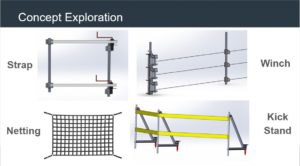 At Geostabilization International, safety is not only a priority within the company, but is embedded into its value system. Ensuring workers go home safe to their families at the end of the work day is a must in the construction industry. Therefore, when GSI approached the project team about designing and prototyping a new Perimeter Protection System for remote area construction sites, the team knew how much this project meant to them.
At Geostabilization International, safety is not only a priority within the company, but is embedded into its value system. Ensuring workers go home safe to their families at the end of the work day is a must in the construction industry. Therefore, when GSI approached the project team about designing and prototyping a new Perimeter Protection System for remote area construction sites, the team knew how much this project meant to them.
The team developed four unique designs to pitch to GSI and after the preliminary design review, GSI selected a combination of the concepts to move forward with. The team analytically ensured the safety of the design and then tested a 90 ft prototype. The system utilizes winches with strap lines to act as a barrier between workers on the ground level and the cliff face below. A cable winch can be installed onto the system to allow for suspended workers. The team was able to set up the prototype in under six minutes and met all the design requirements: lightweight, easy to install, durable, and meeting OSHA standards.
GSI is excited to conduct field testing and looks forward to keeping their workers safe with the newly designed perimeter protection system.
Design Approach
Currently, GeoStabilization International (GSI) and other construction companies rely on makeshift solutions to protect workers in remote locations from falls (see the pictures on the right). The current systems are made up of materials that are readily available on the remote job site and include soil nails (steel rebar), climbing rope, and wire rope cable. The systems currently installed are not standardized and there is no way to confirm the systems meet OSHA standards.
The objective of this project is to design a perimeter protection system for Geostabilization International to be used on future construction projects. This system will be lightweight, easy to install, durable, and will meet OSHA, ANSI, and CSA standards. The new system should improve performance in all four of these areas compared to the current system. This table on the right reflects the demands and wishes of GSI that the team used to brainstorm four unique concepts.
The team developed four unique designs to pitch to GSI (see the picture on the right) and after the preliminary design review, GSI selected a combination of the concepts to move forward with.
The designed perimeter protection system utilizes both strap and cable lines to ensure the safety of both personnel on the ground level and those suspended from the cable line. The project team assembled a 90’ functional prototype. This prototype consisted of two strap lines and a bottom winch line. The second to last picture on the right is the final assembled prototype at GSI’s facility. This prototype utilizes two strap winches, one cable winch, four 20’ straps, two 70’ straps, and twelve intermediate clamp assemblies. See the last pictures on the right for the final design drawing.

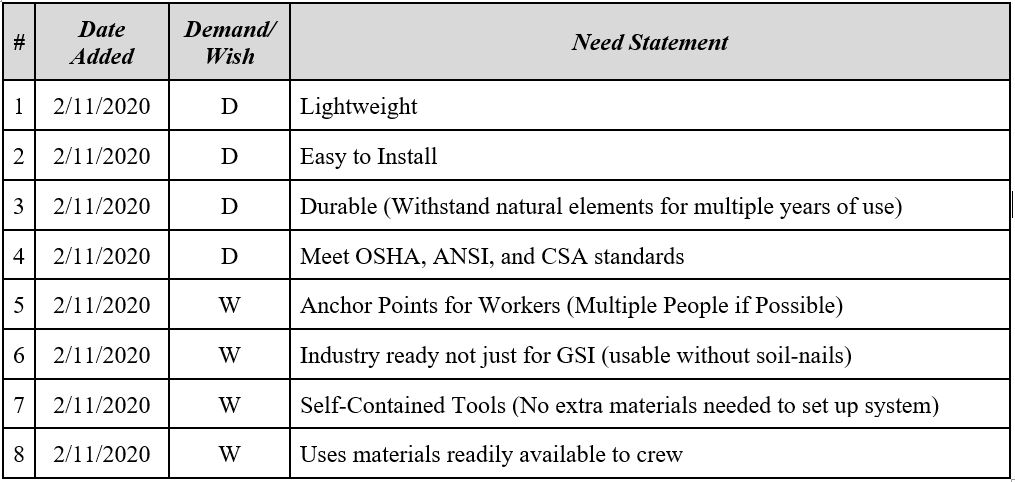
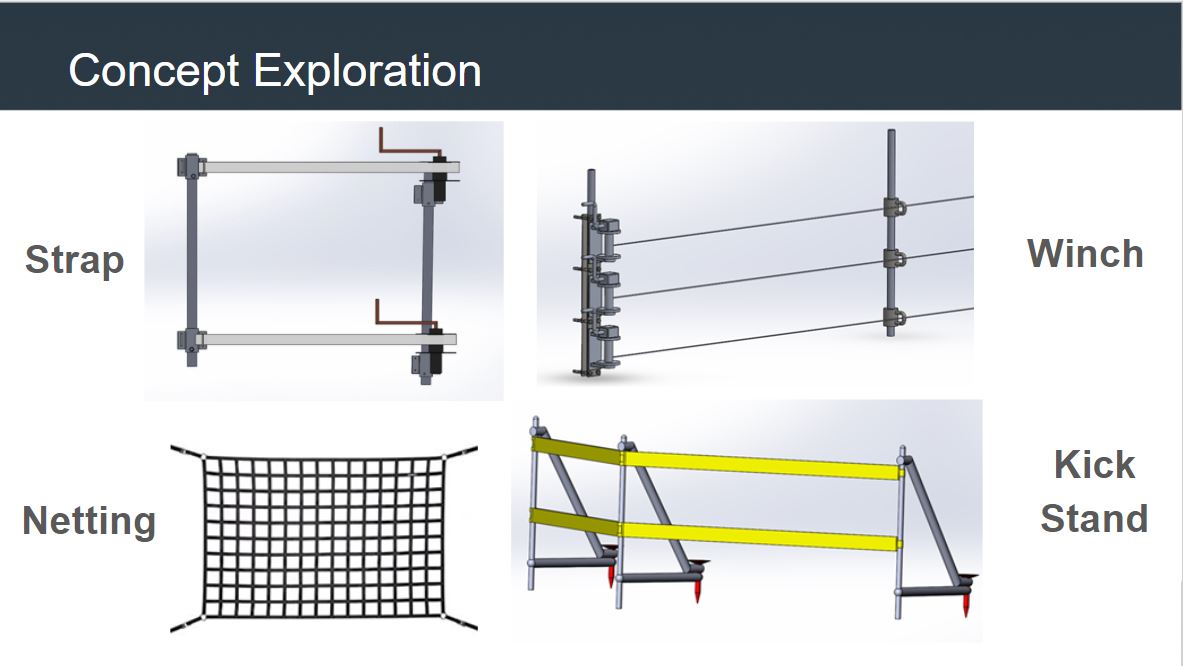
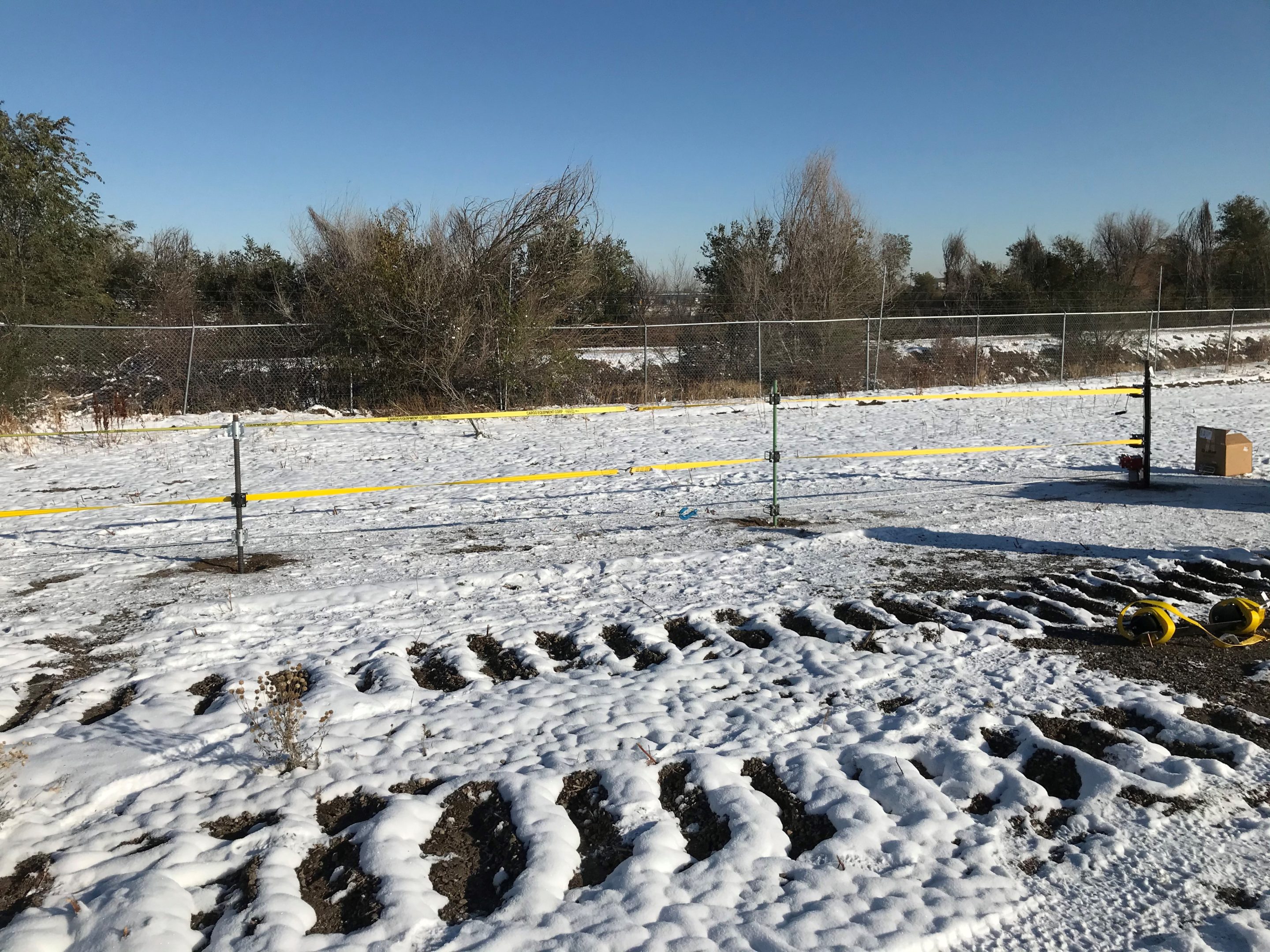
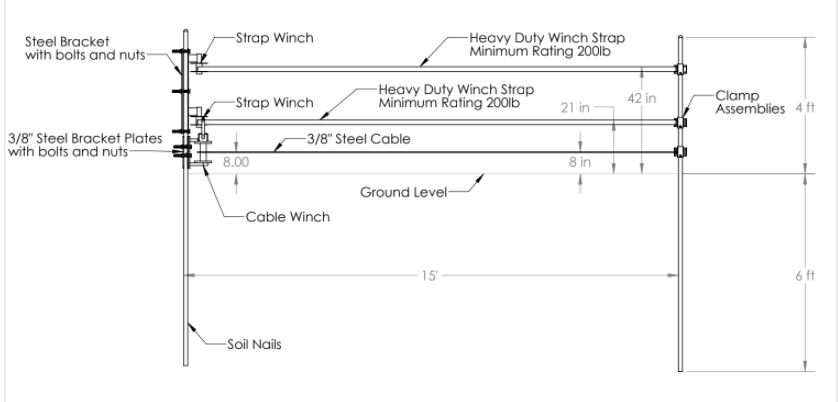
Design Solution
The designed perimeter protection system utilizes both strap and cable lines to ensure the safety of both personnel on ground level and those suspended from the cable line. Below is an outline of the chosen concept.
The Fall Protection System will consist of:
- Two spools with straps are used for the 42” line and the 21” strap line (Measured from the working surface).
- A 20’ strap is spooled onto each winch and through the hooks on the ends of the straps can be connected to additional straps as needed. (Example: for a 75’ system, a 70’ strap can be connected to the 20’ strap.)
- A bracket is used to attach the strap winches to the first soil nail.
- Intermediate soil nails will be placed 25’ apart.
- Setscrew clamp assemblies with u-bolts will be placed at appropriate heights on each soil nail.
- The strap will be run through the u-bolts on intermediate soil nails and terminate on a u-bolt of the last soil nail.
When anchoring from the system is desired:
- A Winch with 20’ of steel cable will be sent in the BOL
- The winch attaches to steel plates and is bolted to first soil nail
- The steel cable on the winch is pulled out, ran through the clamps on intermediate soil nails, and terminated with a snap hook on the last soil nail.
- If more than 20’ of cable is required, an extra cable(s) can be attached. Note: A hook with saddle clamps can be used to create loops on the ends of the cable lines.
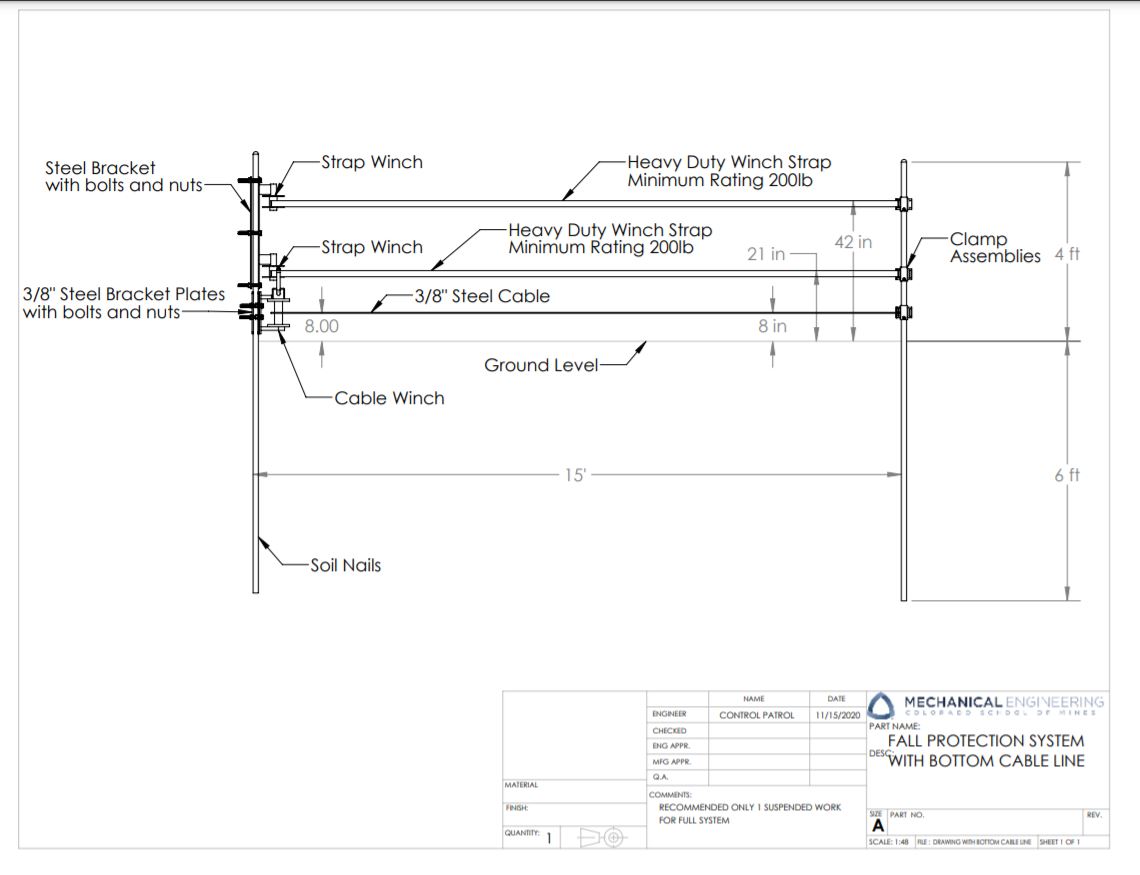
Next Steps
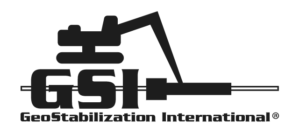 Geostabilization International will now purchase and fabricate the updated components and perform field testing on the system.
Geostabilization International will now purchase and fabricate the updated components and perform field testing on the system.
Meet the Team
Austin Schwaderer
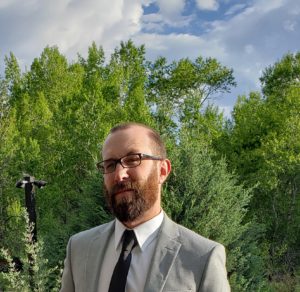 Originally from western Nebraska but have lived most of my life in Colorado. I am a senior at Colorado School of Mines majoring in Mechanical Engineering and plan to graduate this fall. I am also an Airforce veteran and avid outdoorsman. Alpine climbing, four wheeling and backpacking are my favorite activities
Originally from western Nebraska but have lived most of my life in Colorado. I am a senior at Colorado School of Mines majoring in Mechanical Engineering and plan to graduate this fall. I am also an Airforce veteran and avid outdoorsman. Alpine climbing, four wheeling and backpacking are my favorite activities
Gage Gellerman
 Gage is a graduating mechanical engineering student from Colorado Springs, Colorado. After graduation, he will enter the construction industry as a project engineer. In his free time, Gage enjoys disc golf, basketball, movies, and serving with the campus ministry Christian Challenge.
Gage is a graduating mechanical engineering student from Colorado Springs, Colorado. After graduation, he will enter the construction industry as a project engineer. In his free time, Gage enjoys disc golf, basketball, movies, and serving with the campus ministry Christian Challenge.
Jose Ibarra
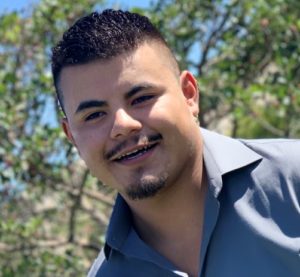 Jose is a graduating mechanical engineer who was born and raised in Colorado. After graduation, plans to travel (if COVID allows) before entering fire protection industry as a project manager/engineer. In his free time, he loves playing baseball and basketball. Also defines himself as a food enthusiast, a person who am ardent or refined interest in food and who eats food not only out of hunger but due to their interest or hobby and is passionate about food.
Jose is a graduating mechanical engineer who was born and raised in Colorado. After graduation, plans to travel (if COVID allows) before entering fire protection industry as a project manager/engineer. In his free time, he loves playing baseball and basketball. Also defines himself as a food enthusiast, a person who am ardent or refined interest in food and who eats food not only out of hunger but due to their interest or hobby and is passionate about food.
Joshua Olson
 My name is Josh Olson, and I am a graduating senior at Colorado School of Mines. I am a mechanical engineering major. I am from Steamboat Springs Colorado. I spend most of my free time skiing or running.
My name is Josh Olson, and I am a graduating senior at Colorado School of Mines. I am a mechanical engineering major. I am from Steamboat Springs Colorado. I spend most of my free time skiing or running.
Kevin Medina
 Born in California raised in Colorado Kevin Medina is an aspiring engineer with interest in manufacturing and design. Kevin has always been fascinated by machinery and moving parts as small as hand tools and as large as airplanes. In his free time, Kevin enjoys playing soccer, playing the saxophone, and building and racing his 800+ horsepower Mitsubishi Evo IX.
Born in California raised in Colorado Kevin Medina is an aspiring engineer with interest in manufacturing and design. Kevin has always been fascinated by machinery and moving parts as small as hand tools and as large as airplanes. In his free time, Kevin enjoys playing soccer, playing the saxophone, and building and racing his 800+ horsepower Mitsubishi Evo IX.

